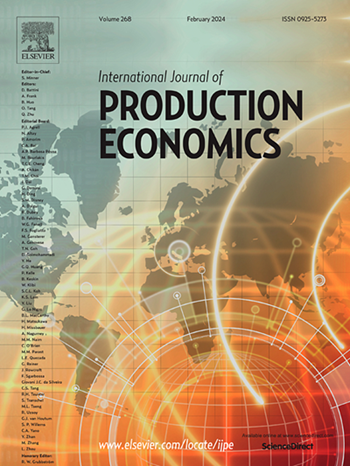Stochastic network optimization for strategic resource pre-positioning and allocation
IF 10
1区 工程技术
Q1 ENGINEERING, INDUSTRIAL
引用次数: 0
Abstract
This paper presents a stochastic network modeling approach to develop insights into strategic facility location planning, capacity management, resource pre-positioning, and allocation. The primary purpose of the proposed model is to present a cost-effective logistics network designed for efficiently handling diverse relief items across a spectrum of crisis scenarios. By incorporating stochastic elements, we aim to capture the inherent unpredictability of demand fluctuations and the impact of crises. Our approach optimizes facility sizes to leverage economies of scale while improving allocation decisions. Additionally, it ensures fairness across demand points by implementing a strategy to mitigate relative shortages. To demonstrate the practical applicability of our model, we conduct a computational case study utilizing instances from the national food stockpiling system in Germany. Moreover, we present a sensitivity analysis highlighting the impact of crisis intensity, increased storage and production capacity, and weighting decisions of transportation costs on facility location and assignment decisions. The results provide economic and managerial insights for public decision-makers, enhancing cost-effective disaster preparedness and network design. The case study shows that the proposed model optimizes inventory by eliminating excess quantities and favoring large warehouses, reducing costs through fewer locations. However, prioritizing rapid delivery results in a more decentralized network with smaller, costlier warehouses. The logistics network adapts to varying demand scenarios, strategically placing warehouses in densely populated regions with higher crisis risks.
策略性资源预定位与分配的随机网络优化
本文提出了一种随机网络建模方法,以深入了解战略性设施选址规划、容量管理、资源预定位和分配。所提议的模型的主要目的是提出一个具有成本效益的物流网络,旨在有效地处理各种危机情况下的各种救济物品。通过纳入随机因素,我们的目标是捕捉需求波动和危机影响的内在不可预测性。我们的方法优化设施规模,利用规模经济,同时改善分配决策。此外,它通过实施减轻相对短缺的策略来确保需求点之间的公平性。为了证明我们模型的实际适用性,我们利用德国国家粮食储存系统的实例进行了计算案例研究。此外,我们提出了一个敏感性分析,强调危机强度,增加储存和生产能力的影响,以及运输成本对设施选址和分配决策的加权决策。研究结果为公共决策者提供了经济和管理方面的见解,增强了具有成本效益的备灾和网络设计。案例研究表明,所提出的模型通过消除过剩数量和青睐大型仓库来优化库存,通过减少地点来降低成本。然而,优先考虑快速交付会导致网络更加分散,仓库规模更小、成本更高。物流网络适应不同的需求情景,战略性地将仓库放置在人口密集、危机风险较高的地区。
本文章由计算机程序翻译,如有差异,请以英文原文为准。
求助全文
约1分钟内获得全文
求助全文
来源期刊
CiteScore
21.40
自引率
7.50%
发文量
266
审稿时长
52 days
期刊介绍:
The International Journal of Production Economics focuses on the interface between engineering and management. It covers all aspects of manufacturing and process industries, as well as production in general. The journal is interdisciplinary, considering activities throughout the product life cycle and material flow cycle. It aims to disseminate knowledge for improving industrial practice and strengthening the theoretical base for decision making. The journal serves as a forum for exchanging ideas and presenting new developments in theory and application, combining academic standards with practical value for industrial applications.

 求助内容:
求助内容: 应助结果提醒方式:
应助结果提醒方式:


